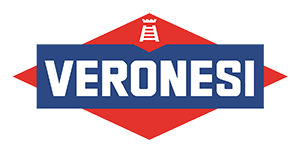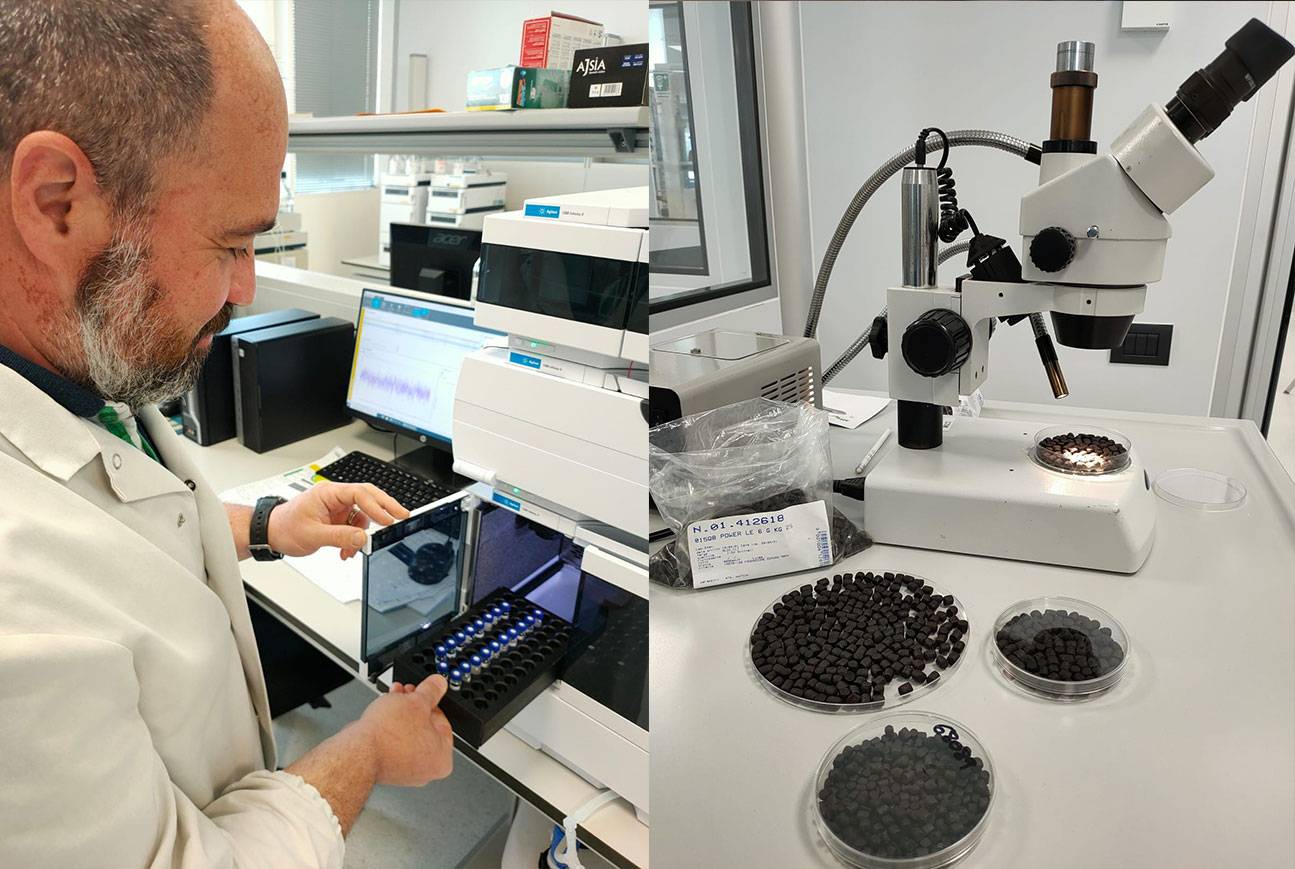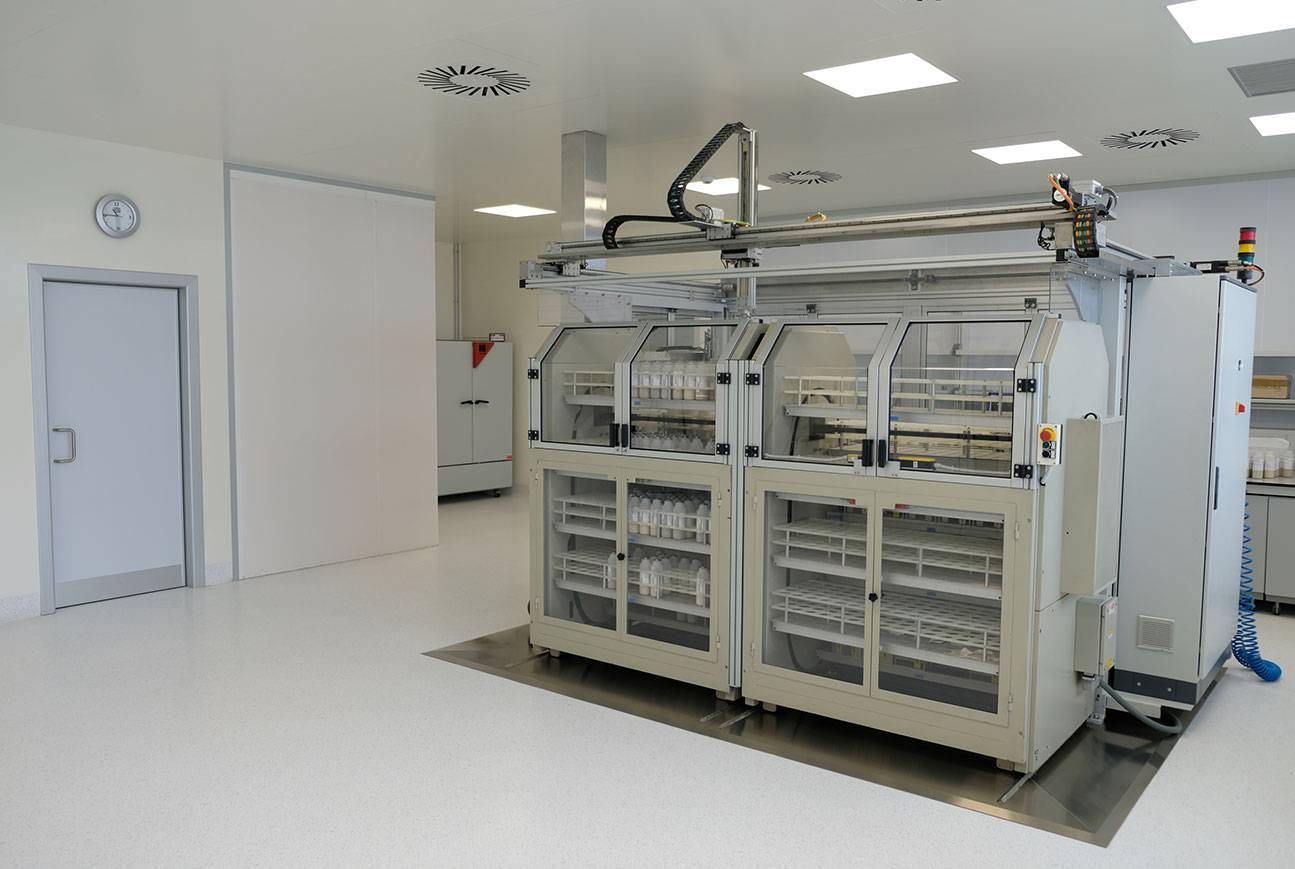Our laboratory: chemical checks to ensure quality
Since 2018 our central chemical laboratory allows to carry out analyses in a range of different areas of food production, such as water, contaminants in animal feed and foodstuffs, verification of processes, nutritional parameters and additives. Our facility, which is fundamental in achieving ever-improving quality levels, has been accredited by the Italian Accreditation Body ACCREDIA. This certification is proof of the competence of our laboratory in providing impartial and technically valid results.
What is the laboratory’s role and what does it do in relation to animal feed?
The laboratory plays a vital role before, during and after the production of the feed, and also on-site with livestock farmers. Essentially, it functions at every stage of the production and supply of the feed for animal nutrition.
The laboratory can provide analyses on:
- ingredients that make up feed, whether raw materials, additives, premixes, or complementary feed;
- finished product, both to verify nutritional aspects and to check for the amount of undesirable substances (mycotoxins, heavy metals, carry-over residuals from the production process);
- intermediary stages for equipment certification (eg, the homogeneity of a mixture);
- company products that the farmer uses to mix the animals’ diet that is made up with complementary feed;
- water from farm facilities;
- animal origin products produced by the company (mainly eggs and milk).
All this is done in parallel with analyses carried out by official control bodies, according to what is laid down in EU and Italian law (EU Regulation 625 of 2017, Italian Legislative Decree 27/2021, the PNAA – Italian national animal feed plan), which are done to ensure the application of the regulations on food and animal feed and of the rules on health and animal welfare.
One of the requirements introduced by the new legislation consists in the obligation, even in the feed sector, of carrying out self-checking analyses using accredited methods. These methods must also be followed by farmers who carry out analyses as part of their self-monitoring.
Accreditation of methods is a complex step and one that takes time.
In relation to the range of feed and raw materials, our Central Chemical Laboratory has obtained accreditation for methods to analyse heavy metals, concentration of additives (coccidiostats) and active pharmaceutical ingredients (cyclins).
Although the ISO/IEC 17025 certification process (which lays down the “general requirements for the competence of testing and calibration laboratories”) may have finished, accreditation of individual methods is ongoing, since every single method has to be subjected to accreditation.
Next steps will involve analyses of mycotoxins and residues of sensitive active ingredients arising from cross contamination.
Who works in the laboratory?
The chemical laboratory employs professionals with specialist training, especially lab technicians, chemical technicians and chemistry graduates. Their skillsets are being continually developed through in-house and external training courses and practical work alongside expert technicians.
The ability to correctly implement the accredited methods is periodically assessed with grading tests and by taking part in ring tests with the larger European laboratories.
External training is conducted in partnership with suppliers of scientific instruments (when new equipment is acquired or a new analytical technique is acquired, knowledge of how to handle it must also be acquired), universities and specialist consultancy firms.
Which guarantees can the laboratory provide?
The ongoing partnership with outside laboratories, official verification laboratories, trade associations, the great knowledge of the materials being analysed (food and animal feed), the skill of the staff and the willingness of the management to approve the investments in equipment provide excellent guarantees that precise and accurate analyses will be obtained with the best analytical techniques available on the market.
How does all of this represent an advantage to the farmer?
It becomes apparent in aspects of guaranteed food safety. Because the laboratory has obtained accreditation, our analyses have legal standing, and consequently can be shown by farmers as official, self-monitoring documents.
Giving one’s animals feed whose quality and safety (in terms of meeting the formula and respecting the limits imposed by the law as to undesirable substances) is officialy proven contributes to maintaining the welfare of animals at the firm, the state of health of the animals that are being reared, and the safety and healthiness of the animal origin products obtained.


